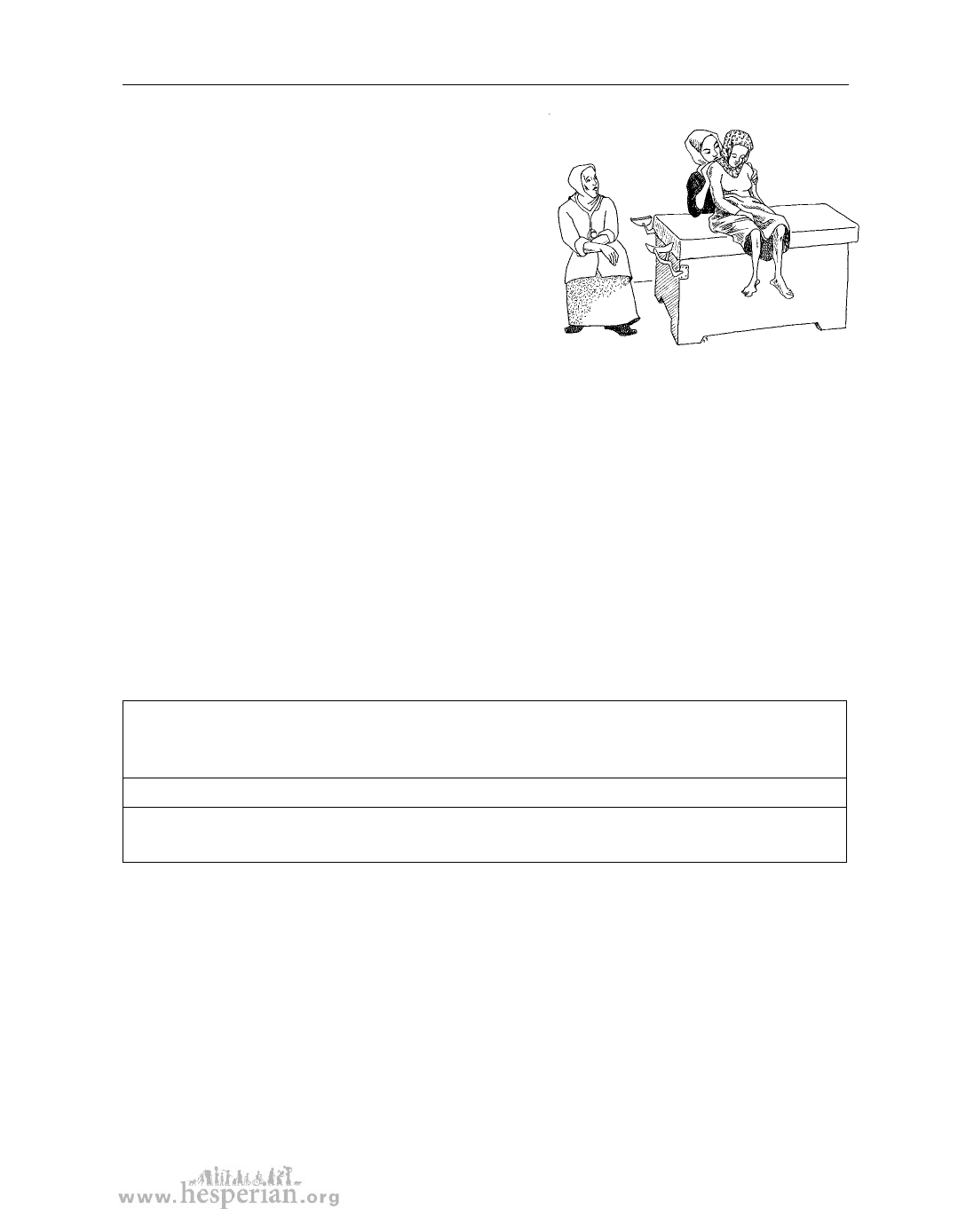
Sudden high blood pressure with pounding headache (dysreflexia) 119
If you cannot pass urine:
• Insert a catheter and empty the bladder
(see pages 103 to 104).
If you are already using a catheter:
• Are there bends or twists in the catheter?
Straighten them so urine can flow.
• Is the catheter blocked? Replace the
catheter. Or inject 30 cc of boiled and
cooled water (or sterile saline solution)
into the catheter to clear the tube.
If you have signs of a urinary infection:
• See pages 105 to 106. If this seems to be the cause, inject an anesthetic
solution into the bladder through a catheter. Use 10 cc of 1% lidocaine in
20 cc of boiled water. Clamp the catheter for 20 minutes and then release it.
The infection also needs to be treated with antibiotics.
If your bowel is full:
• If it has been a long time since passing stool, put some lidocaine jelly on a gloved
finger and gently put it in the anus to check if the bowel is full. If it is packed hard
with stool, put more lidocaine jelly in the anus. Wait 15 minutes or until the
headache becomes less. Then remove the stool with a finger (see page 107).
If the signs do not go away in 10 minutes, use medicine. Nifedipine will make the
blood pressure go down in 5 to 10 minutes.
Medicine
nifedipine
or nifedipine
Medicines for dysreflexia
How much to take
Bite into and swallow a 10 mg capsule.
Crush a 10 mg tablet in a little clean water to make a soft paste and put
the paste under the tongue.
Too much stool or urine in your body can cause dysreflexia. Take care to do your
bowel program regularly. Drink a lot of water and eat foods that will help you have easy
bowel movements. In addition, make sure to pass urine often. If you use a catheter,
make sure it does not become twisted or bent.
A Health Handbook for Women with Disabilities 2007